The DoCoMo Mojo
Back to Contents of Issue: January 2004
|
|
|
|
by Chetan Sharma and Yasuhisa Nakamura |
|
|
We will look at the success factors behind i--mode, the service that changed the landscape of wireless Internet applications and services forever. We will also clear up some misconceptions common among analysts and the press regarding the success factor of i-mode. We will look at various business models, their advantages and disadvantages, and how various players open the revenue stream for themselves.
Wireless applications and services are being used extensively in situations that require personalized and/or time-critical information. Location-specific transactions are also becoming possible now, opening up a new range of commercial opportunities. Broadly speaking, wireless data services will embrace infotainment services, lifestyle facilitators and transaction-based services, with financial services, travel and transportation being the most obvious industry segments to thrive in the wireless data world. However, non-human uses of the wireless network will also open up to wireless operators a vast range of revenue streams that are not yet available today.
Potential wireless data applications for both the consumer and business markets are endless, with the applications divided broadly into communications, infotainment, lifestyle facilitators and transactions.
In this article, we focus on services and capabilities that either have been introduced already, or have been announced and can be realistically foreseen within the next few years. We will also take a detailed look at NTT DoCoMo's i--mode phenomenon, which has set an example for the industry to follow.
The i--mode phenomenon
Japan's growing band of email "junkies" has driven the phenomenal success of i--mode, the mobile phone service that offers continuous Internet access.
European and North American operators look on with envy -- and increasing desperation. Their wireless application protocol (WAP) based services have failed to make an impact. Meanwhile, operators in Europe have spent billions acquiring third-generation (3G) mobile licenses to support even more advanced services.
The more European telecom shares get hit by skepticism about WAP services and worries about the debt taken on to pay for new investments, the more European operators turn to Japan for inspiration and hope. Hence the importance of understanding the reasons for i--mode's success, and the worrying possibility that Western excitement about wireless Internet services may be based on several i--mode myths.
All of these reasons are partly true -- but mostly false. For example, most Japanese people who live outside of metropolitan areas such as Tokyo or Osaka commute by car just like people in Seattle or Los Angeles. It is only in areas within Tokyo or Osaka that people mainly commute by trains and subways. This kind of misunderstanding stems from the fact that 99 percent of Westerners visit only Tokyo or Osaka and derive their conclusions after a week's stay in these cities. The thinking is analogous to someone generalizing about life in the US after a visit to Manhattan.
Though PC penetration is far lower than in the US, Japan is still among the top five nations in terms of PC usage. In 2003, consumer penetration was forecast to reach 46 percent, while business usage was to be above 67 percent, according to the Gartner Group.
Now, let us consider the language situation in Japan. The Japanese language is written with three different character sets. This is what makes it so complicated. Does the success of i--mode have something to do with the Japanese language? Some analysts try to link language with i--mode, but how do we explain the fact that thousands of foreigners in Japan have also become addicted to i--mode? They are e-chatting or emailing or e-surfing in English or Portuguese (most i--mode phones are bilingual). Consumers can also enjoy English content such as news from CNN, Bloomberg, Dow Jones and, of course, Disney. This indicates that the Japanese language has no direct correlation with i--mode's success.
Of course, i--mode does have some technical advantages. For one thing, it uses a variant of HTML, the standard script of the Internet (unlike WAP, which runs on a completely different protocol/language) and thus boasts easier development support. (This advantage disappears, of course, with the introduction of XHTML.) In addition, packet switching saves users the hassle of calling up a Web site every time they need to interact with one.
US and European industry analysts believe the faster access speeds of the 3G network will finally make possible the wireless Internet revolution. But at 9.6 kb/s, i--mode's data transmission rate can hardly be described as fast. In densely populated cities, it would be more practical to download short, 10- or 15-second clips of music and video. Having "always on" connectivity makes a difference, and the higher speeds help. But high speed is not requisite for good application design.
If customers like what they see, they can order a full-length recording of a pop song or sporting event, downloaded over fixed telecommunications networks. That is one of the reasons why DoCoMo was keen to tie up with America Online in developing services that combine the benefits of both fixed and mobile Internet access.
In contrast, a variety of content has been the secret of DoCoMo's success. Japanese teenage girls in knee-high boots dream of downloading the latest cute cartoon characters to decorate their screens. Businessmen try their luck at a virtual fishing game or check the latest ball scores. "The package of content that we put together was our killer application that helped i--mode take off," says Toshiharu Nishioka, former manager of DoCoMo's gateway business department.
This points to yet another myth that has fed the frenzy of European operators: that by putting existing content, such as films and popular songs, onto mobile telephones, the mobile Internet business will provide a quick and easy payback.
"In Europe there is an overly optimistic view that if they just take content off the shelf, it will offer them a huge business opportunity," says Kiyoyuki Tsujimura, a board member of DoCoMo and head of the Global Business Department. Content will need to be tailored to the evolving needs of users and the limitations of what 3G can do. Keiji Tachikawa, president and CEO of DoCoMo, noted that the winners in 3G will be the people "who are creative enough to find out what kind of content is most desirable in a mobile [phone] environment."
The i--mode phenomenon has coincided with changing social behavior, particularly among Japan's urban youth. "Young people have a very different attitude towards personal relationships," says Masahiro Yotsumoto, research director at the Dentsu Institute for Human Studies. "Instead of having one good friend, they prefer to have 200 mobile phone friends."
Sending short messages, such as saying goodnight to a friend, is one of the most popular uses of i--mode, Nishioka points out. The lack of real privacy in small Japanese houses has also helped to make mobile phones popular. "In Japan, especially for young people, their home is their cellphone," says John Barber, former director of AOL Japan. (Another critical difference: In Japan data messages cost less than voice messages, which is not always the case in the US).
Even with i--mode's advantages, DoCoMo predicts that it may take four years to make a profit on 3G, and many more years to recover the cost of investing in 3G. Europeans may have to wait even longer.
It is important to point out that these two services are using the legacy WAP technologies (WAP 1.X). However, the response among the subscribers has been quite different if you compare the feedback from consumers in Europe and the USA, where WAP service has been already branded "dead." Why is there such a wide gulf in user behavior?
Let us explain this with some examples. First, NTT DoCoMo introduced the BOBO (Billing On Behalf Of) function, which provided a critical billing mechanism for content providers. Some portion of the income from each subscriber went back to the content provider automatically. This mechanism was a breakthrough for the wireless Internet world, since content providers have no direct way of collecting revenues from consumers without using BOBO functionality. Also, the operators have a high degree of success in collecting money from cellphone users (a more than 98 percent success rate in Japan), so the risk of losing money for a content provider is very low. This is a very effective billing mechanism for small- and medium-sized content providers who cannot prepare a billing system for financial or technical reasons.
Natsuno further explains that the BOBO mechanism is similar to AOL's strategy, where it acts as a platform for Internet businesses and successfully invites many content providers to its portal. In that sense, the business model for i--mode is a global one, and not specific to Japan.
The wireless Internet has also had a dramatic impact on voice ARPU. The "Phone to" function of i-mode allows users to make a voice call by just clicking on the number displayed on a Web site or message screen. These voice calls are often routed to fixed telephone numbers, so the "Phone to" function contributes to the increase in fixed network traffic. Some other examples are the "Mail to" and "Web to" functions. The "Mail to" function facilitates the display of a mail composition screen at the click of the email address displayed on a Web site or the message screen. Similarly, the "Web to" function allows users to browse with ease, clicking on the URL displayed on a Web site. These simple yet convenient functions increase user access to existing ISPs.
It is extremely important to understand the wireless Internet ecosystem: its local and global presence, the players, the value chain and the environment where all players in the chain benefit from new and popular applications and services. Mobile data involve the integration of a programming environment, content, transport and end-user terminals. No carrier outside Japan has executed end-to-end as efficiently and successfully as DoCoMo. The company has leveraged its channel dominance to corral handset vendors -- Sony, Sharp, Kyocera, Matsushita and even Nokia -- to do its bidding. @ |
|
Note: The function "email this page" is currently not supported for this page.


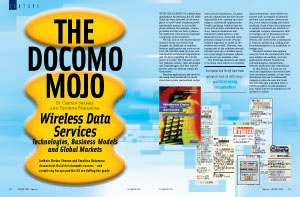 WITH THE ADVENT OF wireless data applications and services, the old value chain has been disturbed by the emergence of a new breed of players providing valuable services to the mobile phone industry. For example, content providers who did not have a place in the chain now constitute an important component of the ecosystem.
WITH THE ADVENT OF wireless data applications and services, the old value chain has been disturbed by the emergence of a new breed of players providing valuable services to the mobile phone industry. For example, content providers who did not have a place in the chain now constitute an important component of the ecosystem.
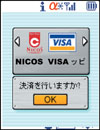 The following situations are likely to be those most suited to a wireless data environment: those where consumers wish to respond to personalized and time-sensitive information (e.g. stock market trading and online auctions); those where the transaction is simple (consumers are unlikely to undertake complex transactions such as buying a car, or processes such as researching a stock, via a mobile device); and those where a transaction is location specific (e.g. finding local hotels/restaurants in an unfamiliar or foreign city).
The following situations are likely to be those most suited to a wireless data environment: those where consumers wish to respond to personalized and time-sensitive information (e.g. stock market trading and online auctions); those where the transaction is simple (consumers are unlikely to undertake complex transactions such as buying a car, or processes such as researching a stock, via a mobile device); and those where a transaction is location specific (e.g. finding local hotels/restaurants in an unfamiliar or foreign city).
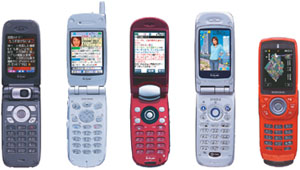 Western analysts often point out that the success of i--mode is the result of several special characteristics and the environment in Japan: Japan is a pedestrian-centric country; the penetration rate of PCs in Japan is very low, so people have to use a cellphone instead of a PC for Internet access; and the Japanese language is different from English and other languages.
Western analysts often point out that the success of i--mode is the result of several special characteristics and the environment in Japan: Japan is a pedestrian-centric country; the penetration rate of PCs in Japan is very low, so people have to use a cellphone instead of a PC for Internet access; and the Japanese language is different from English and other languages.
 There is a widespread misconception among Western carriers and players that the wireless Internet is all about technology. One view is that once i--mode-style packet switching replaces the circuit switching of traditional telephony, the demand for wireless Internet services should take off. With packet switching, the telephone can be continuously connected to various Web sites. It also lowers the cost of sending data.
There is a widespread misconception among Western carriers and players that the wireless Internet is all about technology. One view is that once i--mode-style packet switching replaces the circuit switching of traditional telephony, the demand for wireless Internet services should take off. With packet switching, the telephone can be continuously connected to various Web sites. It also lowers the cost of sending data.
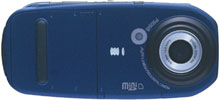 Japanese operators are wary of technology for technology's sake. "WAP failed [in Europe] because operators concentrated on the technology rather than the content," says Keiichi Enoki, a board member of DoCoMo and the charisma behind the i--mode project team. "It is like worrying about the quality of TV sets before you have any programs."
Japanese operators are wary of technology for technology's sake. "WAP failed [in Europe] because operators concentrated on the technology rather than the content," says Keiichi Enoki, a board member of DoCoMo and the charisma behind the i--mode project team. "It is like worrying about the quality of TV sets before you have any programs."
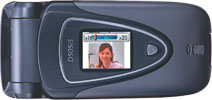 The Japanese, from teens to business executives, have overwhelmingly embraced wireless Internet services. In a short period of three years, the total number of wireless Internet service users eclipsed 50 million, which is nearly 74 percent of the total number of cellular/PHS users. The success of i--mode is often a discussion topic in news media, conference debates and analyst reports, but two other rival services -- EZ-web from KDDI and J-Sky from J-Phone -- have also done well. EZ-web has over 9.3 million users, while J-Sky was able to garner over 9.7 million subscribers in less than three years.
The Japanese, from teens to business executives, have overwhelmingly embraced wireless Internet services. In a short period of three years, the total number of wireless Internet service users eclipsed 50 million, which is nearly 74 percent of the total number of cellular/PHS users. The success of i--mode is often a discussion topic in news media, conference debates and analyst reports, but two other rival services -- EZ-web from KDDI and J-Sky from J-Phone -- have also done well. EZ-web has over 9.3 million users, while J-Sky was able to garner over 9.7 million subscribers in less than three years.
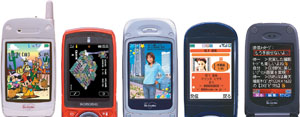 Takeshi Natsuno, executive director of the i--mode planning division of NTT DoCoMo, sums it up: "The true mechanism of the great success is that the operator has made a function of coordination of the total value chain."
Takeshi Natsuno, executive director of the i--mode planning division of NTT DoCoMo, sums it up: "The true mechanism of the great success is that the operator has made a function of coordination of the total value chain."
 Also, terminals play an important part in the ecosystem. The total value of the service is provided by the combination of useful content and attractive terminals. Black-and-white display terminals can no longer convey the charms of Disney characters. The interaction between terminal functions and content is indispensable for the success of wireless Internet applications and services. Because of the physical and functional limitations of cellphones, designs need to be optimized to provide for good service and value proposition. The wireless Internet operator should play an important part in bringing content providers and terminal vendors to the same table. Finally, the interaction with other fixed/cellular telephone operators and ISPs is very important.
Also, terminals play an important part in the ecosystem. The total value of the service is provided by the combination of useful content and attractive terminals. Black-and-white display terminals can no longer convey the charms of Disney characters. The interaction between terminal functions and content is indispensable for the success of wireless Internet applications and services. Because of the physical and functional limitations of cellphones, designs need to be optimized to provide for good service and value proposition. The wireless Internet operator should play an important part in bringing content providers and terminal vendors to the same table. Finally, the interaction with other fixed/cellular telephone operators and ISPs is very important.



